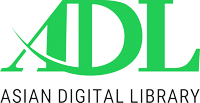Navigating the digital self: Social media addiction and its effect on social comparison and internalizing symptoms
DOI:
https://doi.org/10.71085/sss.04.03.329Keywords:
Social Media Addiction, Social Comparison, Internalizing Symptoms, University Students, Depression, Anxiety, StressAbstract
Social comparison becomes a problematic behavior for university students because of the excessive usage of social media. This addiction increases social comparison, which in turn increases depression, anxiety, and stress, which are considered internalizing symptoms. This study investigated the effects of social media addiction on social comparison and internalizing symptoms in university students. Using the Social Media Addiction Scale, Social Comparison Scale, and DASS-21, the data were collected from a sample of 165 university students (87 males and 78 females), aged (M = 21.38, SD = 2.52), from various departments of the University of Karachi, Pakistan. The results support theoretical theories that associate internalizing symptoms, including stress, anxiety, and depression, with social media addiction. The surprising protective effect of social comparison against depression implies that comparison processes are influenced by contextual and cultural moderators. Overall, the study emphasizes that to lessen the negative consequences of social media addiction, interventions must address both contextual support (such as family, peers, and campus resources) and individual vulnerabilities (such as coping skills and resilience).
Downloads
References
Abdulsalim, S., Anaam, M. S., Farooqui, M., Alshammari, M. S., Alfadly, S., Alolayan, J., Aljarallah, A. A., & Alsahali, S. (2025). Evaluation of social media addiction and its relationship with anxiety and academic performance among medical and non-medical students: A cross-sectional study from Saudi Arabia. Healthcare, 13(3), 295. https://doi.org/10.3390/healthcare13030295
Al Saigh, R., Herzallah, R., & Alhusban, A. (2022). Problematic use of social media platforms and its association with depression in pharmacy students. American Journal of Pharmaceutical Education, 86(5), 408–413. https://doi.org/10.5688/ajpe8625
American Psychological Association. (2018, April 19). Externalizing–internalizing. APA Dictionary of Psychology. https://dictionary.apa.org/externalizing-internalizing
Andreassen, C. S. (2015). Online social network site addiction: A comprehensive review. Current Addiction Reports, 2(2), 175–184. https://doi.org/10.1007/s40429-015-0056-9
Andreassen, C. S., Torsheim, T., & Pallesen, S. (2014). Predictors of use of social network sites at work—a specific type of cyberloafing. Journal of Computer-Mediated Communication, 19(4), 906–921. https://doi.org/10.1111/jcc4.12085
Beyens, I., Pouwels, J. L., van Driel, I. I., Keijsers, L., & Valkenburg, P. M. (2020). The effect of social media on well-being differs from adolescent to adolescent. Scientific Reports, 10(1), 10763. https://doi.org/10.1038/s41598-020-67727-7
Braghieri, L., Levy, R. E., & Makarin, A. (2022). Social media and mental health. American Economic Review, 112(11), 3660–3693. https://doi.org/10.1257/aer.20211218
Butts & Renee, (2024). Social comparison theory. EBSCO Research Starters. https://www.ebsco.com/research-starters/psychology/social-comparison-theory
Buunk, A. P., & Gibbons, F. X. (2007). Social comparison: The end of a theory and the emergence of a field. Organizational Behavior and Human Decision Processes, 102(1), 3–21. https://doi.org/10.1016/j.obhdp.2006.09.007
Carr, C. T., & Hayes, R. A. (2015). Social media: Defining, developing, and divining. Atlantic Journal of Communication, 23(1), 46–65. https://doi.org/10.1080/15456870.2015.972282
Chentsova, V. O., Bravo, A. J., Mezquita, L., Pilatti, A., Hogarth, L., & Cross-Cultural Addictions Study Team. (2023). Internalizing symptoms, rumination, and problematic social networking site use: a cross-national examination among young adults in seven countries. Addictive behaviors,136,107464. https://doi.org/10.1016/j.addbeh.2022.107464
Faelens, L., Hoorelbeke, K., Cambier, R., Van Looy, J., De Raedt, R., & Koster, E. H. W. (2021). Social media use and well-being: A prospective experience-sampling study. Computers in Human Behavior, 114, 106510. https://doi.org/10.1016/j.chb.2020.106510
Festinger, L. (1954). A theory of social comparison processes. Human Relations, 7(2), 117–140. https://doi.org/10.1177/001872675400700202
Frost, R. L., & Rickwood, D. J. (2017). A systematic review of the mental health outcomes associated with Facebook use. Computers in Human Behavior, 76, 576–600. https://doi.org/10.1016/j.chb.2017.08.001
Gilbert, P., & Allan, S. (1994). Assertiveness, submissive behaviour and social comparison. British Journal of Clinical Psychology, 33(3), 295–306. https://doi.org/10.1111/j.2044-8260.1994.tb01125.x
Hwang, H. S. (2019). Why social comparison on Instagram matters: Its impact on depression. KSII Transactions on Internet and Information Systems, 13(3), 1626–1638. https://doi.org/10.3837/tiis.2019.03.029
Jabeen, S., Chaudhary, M. U., & Munir, M. (2024). TikTok's impact on mental health among Pakistani youth. International Journal of Social Science Archives, 7(3). https://ijssa.com/index.php/ijssa/article/view/528
Jabeen, F., Hossain, T., & Bhuya, A. (2025). Associations between social media addiction, FOMO, fatigue, and sleep quality among Jamaican university students. Journal of Health, Population and Nutrition, 44(1), 896. https://doi.org/10.1186/s41043-025-00896-1
Jelenchick, L. A., Eickhoff, J. C., & Moreno, M. A. (2013). “Facebook depression?” Social networking site use and depression in older adolescents. Journal of Adolescent Health, 52(1), 128–130. https://doi.org/10.1016/j.jadohealth.2012.05.008
Jang, K., Park, N., & Song, H. (2016). Social comparison on Facebook: Its antecedents and psychological outcomes. Computers in Human Behavior, 62, 147-154. https://doi.org/10.1016/j.chb.2016.03.082
Jiang, S. (2021). Problematic social media usage and anxiety among university students during the COVID-19 pandemic: The mediating role of psychological capital and the moderating role of academic burnout. Frontiers in Psychology, 12, 612007. https://doi.org/10.3389/fpsyg.2021.612007
Karadağ, E., Tosuntaş, Ş. B., Erzen, E., Duru, P., Bostan, N., Şahin, B. M., Çulha, İ., & Babadağ, B. (2015). Determinants of phubbing, which is the sum of many virtual addictions: a structural equation model. Journal of behavioral addictions, 4(2), 60–74. https://doi.org/10.1556/2006.4.2015.005
Keles, B., McCrae, N., & Grealish, A. (2020). A systematic review: The influence of social media on depression, anxiety, and psychological distress in adolescents. International Journal of Adolescence and Youth, 25(1), 79–93. https://doi.org/10.1080/02673843.2019.1590851
LaRose, R., Lin, C. A., & Eastin, M. S. (2014). Unregulated Internet usage: Addiction, habit, or deficient self-regulation? Media Psychology, 5(3), 225–253. https://doi.org/10.1207/S1532785XMEP0503_01
Landa Blanco, M., Reyes García, Y., Landa Blanco, A. L., Cortés Ramos, A., & Paz Maldonado, E. (2024). Social media addiction and academic engagement among university students: The mediating role of self-esteem, depression, and anxiety. Heliyon, 10(2), e24384. https://doi.org/10.1016/j.heliyon.2024.e24384
Lee, M. H. L., Kaur, M., Shaker, V., Yee, A. Y., Sham, R., & Siau, C. S. (2023). Cyberbullying, social media addiction, and their associations with depression, anxiety, and stress among medical students in Malaysia. International Journal of Environmental Research and Public Health, 20(4), 3136. https://doi.org/10.3390/ijerph20043136
Li, S., Chen, X., Liu, L., & Sun, C. (2024). The relationship between social withdrawal and problematic social media use in Chinese college students: A chain mediation of alexithymia and negative body image. BMC Psychology, 12, 246. https://doi.org/10.1186/s40359-024-01755-0
Lockwood, P., & Kunda, Z. (1997). Superstars and me: Predicting the impact of role models on the self. Journal of Personality and Social Psychology, 73(1), 91–103. https://doi.org/10.1037/0022-3514.73.1.91
Lovibond, S. H., & Lovibond, P. F. (1995). Depression Anxiety Stress Scales (DASS--21, DASS--42) [Database record]. APA PsycTests. https://doi.org/10.1037/t01004-000
Luo, Y., Liang, L., Zhou, H., Qi, X., Xu, J., & Meng, H. (2025). The impact of social media addiction on depression among university students in Wuhan, China: A longitudinal study. BMC Public Health, 25, 2279. https://doi.org/10.1186/s12889-025-23443-3
Ma’rof, A. M., Nurzalina, A., & Rahim, S. (2024). Social media addiction, fear of missing out (FOMO), social comparison, and social anxiety among Malaysian youths. Journal of Adolescence, 98, 56–67. https://doi.org/10.1016/j.adolescence.2024.01.004
Marino, C., Gini, G., Vieno, A., & Spada, M. M. (2018). The associations between problematic Facebook use, psychological distress and well-being among adolescents and young adults: A systematic review and meta-analysis. Journal of Affective Disorders, 226, 274–281. https://doi.org/10.1016/j.jad.2017.10.007
Mulansky, M., Raschke, P., Winkler, S., & Wessel, L. (2022). Passive smartphone sensing and depressive symptoms during the COVID-19 pandemic: Evidence from university students. arXiv Preprint, arXiv:2203.01523. https://doi.org/10.48550/arXiv.2203.01523
Nunnally, J.C. and Bernstein, I.H. (1994) The Assessment of Reliability. Psychometric Theory, 3,
248-292.
Piteo, E. M., & Ward, K. (2020). Social networking sites and associations with depressive and anxiety symptoms in children and adolescents: A systematic review. Child and Adolescent Mental Health, 25(4), 201–216. https://doi.org/10.1111/camh.12373
Qirtas, M. M., Zafeiridi, E., White, E. B., & Pesch, D. (2023). The relationship between loneliness and depression among college students: Mining data derived from passive sensing. Digital Health, 9, 20552076231211104. https://doi.org/10.1177/20552076231211104
Riehm, K. E., Feder, K. A., Tormohlen, K. N., Crum, R. M., Young, A. S., Green, K. M., ... & Mojtabai, R. (2019). Associations between time spent using social media and internalizing and externalizing problems among US youth. JAMA Psychiatry, 76(12), 1266–1273. https://doi.org/10.1001/jamapsychiatry.2019.2325
Santos, A. J., Santos, S. E., Souza, M. V. S., Ferreira, T. M. S., Souza, F. L. G., Silva, E. M. L., & Felix, P. T. (2021). Social networks and the impacts of misuse for mental health. International Journal of Sciences, 2(3), 117–120. https://doi.org/10.29327/229003.2.3-22
Shensa, A., Escobar-Viera, C. G., Sidani, J. E., Bowman, N. D., Marshal, M. P., & Primack, B. A. (2017). Problematic social media use and depressive symptoms among U.S. young adults: A nationally representative study. Social Science & Medicine, 182, 150–157. https://doi.org/10.1016/j.socscimed.2017.03.061
Smith, L., Jacob, L., Trott, M., Yakkundi, A., Barnett, Y., Butler, L., & López-Sánchez, G. F. (2020). The association between social media use and mental health among children and young people: A systematic review. BMC Public Health, 20, 1720. https://doi.org/10.1186/s12889-020-09462-8
Smith, R. H., Diener, E., & Garonzik, R. (1989). The roles of comparison and self-evaluation in the expression of envy. Motivation and Emotion, 13(3), 271–292. https://doi.org/10.1007/BF00995676
Smith, R. H., Diener, E., & Garonzik, R. (2004). The roles of comparison and self-evaluation in the expression of envy. Motivation and Emotion, 28(3), 195–208. https://doi.org/10.1023/B:MOEM.0000032312.64069.9d
Smith, R. H., Diener, E., & Wedell, D. H. (1989). Intrapersonal and social comparison determinants of happiness: A range frequency analysis. Journal of Personality and Social Psychology, 56(3), 317–325. https://doi.org/10.1037/0022-3514.56.3.317
Sujarwoto, S., Tampubolon, G., & Pierewan, A. C. (2021). Social media addiction and mental health among university students during the COVID-19 pandemic in Indonesia. Heliyon, 7(12), e08537. https://doi.org/10.1016/j.heliyon.2021.e08537
Toseeb, U., & Inkster, B. (2015). Online social networking sites and mental health research. Frontiers in Psychiatry, 6. https://doi.org/10.3389/fpsyt.2015.00036
Twenge, J. M., & Campbell, W. K. (2018). Associations between screen time and lower psychological well-being among children and adolescents: Evidence from a population-based study. Preventive Medicine Reports, 12, 271–283. https://doi.org/10.1016/j.pmedr.2018.10.003
Vogel, E. A., Rose, J. P., Roberts, L. R., & Eckles, K. (2014). Social comparison, social media, and self-esteem. Psychology of Popular Media Culture, 3(4), 206–222. https://doi.org/10.1037/ppm0000047
White, K., & Lehman, D. R. (2005). Culture and social comparison seeking: The role of self-motives. Personality and Social Psychology Bulletin, 31(2), 232–242. https://doi.org/10.1177/0146167204271326
Waseem, M. A., Ahmad, S., & Zafar, A. (2025). Social and psychological costs of problematic use of social media among Pakistani university students: The mediating roles of social anxiety and loneliness. Social Science Spectrum, 4(1), 262–288. https://doi.org/10.71085/sss.04.01.218
Wills, T. A. (1981). Downward comparison principles in social psychology. Psychological Bulletin, 90(2), 245–271. https://doi.org/10.1037/0033-2909.90.2.245
Zink, J., Belcher, B. R., Kechter, A., Stone, M. D., & Leventhal, A. M. (2019). Reciprocal associations between screen time and emotional disorder symptoms during adolescence. Preventive Medicine Reports, 13, 281–288. https://doi.org/10.1016/j.pmedr.2019.01.014
Downloads
Published
Data Availability Statement
The data that support the findings of this study are available from the corresponding author upon reasonable request.


































